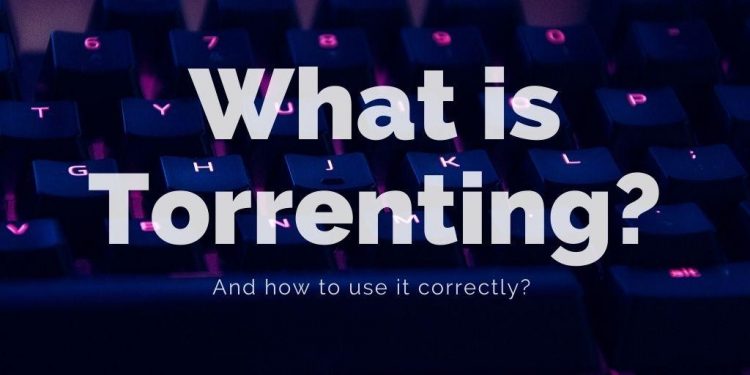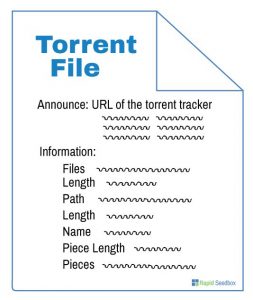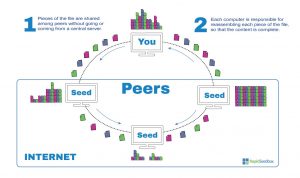If you have a little experience with torrenting, this article is for you. We’ll take you on a journey to understanding what exactly is torrenting? Why does it matter? How does it work?
We’ll ultimately guide you in the right direction of how to use it correctly and how to download torrents anonymously.
What is Torrenting?
The concept of Torrenting came from BitTorrent, which is a file-sharing mechanism based on the popular P2P (Peer-to-Peer). As opposed to the classic server-client transferring mechanism where the server dictates the communication, and the client listens — in a P2P world, all peers (computers) connect, as clients and servers. The peers create an independent and self-organized network.
P2P was popularized by legendary services such as Napster, the mp3 sharing behemoth of the 2000s, and other ones like Gnutella, eMule, Kazaa, etc. But when BitTorrent came to the scene, it changed the rules of the P2P world. BitTorrent didn’t have any built-in search engine as previous tools had, so they had to introduce a new concept of using a small “torrent file” which contained “data about the content” or metadata.
Torrenting is then “the action or process of using the BitTorrent file transferring mechanism.”
In this context, BitTorrent is not to be confused with the client and the company, for more information on these concepts, check Demystifying BitTorrent.
Below is an example of the data you’ll find within a torrent file.
The torrent file contains the information about torrent trackers (their server IP or hostname). It also includes information on the data itself, including length, path, name, pieces of the file, etc.
Is Torrenting Legal?
Is fire illegal?
No, right? And it shouldn’t be.
But what’s illegal is how you use it and what for. You can cook a meal or burn a house (one is legal and the other one, not)
Torrenting is the same. It depends on how you use it — BitTorrent is used by Universities to transfer files to their students quicker. It is also used by Facebook to push updates to their geographically dispersed servers. It is used by research institutes to move big data from/to remote stations. They are using BitTorrent to transfer legal content.
But when you go to PirateBay and download a copyright version of The Avengers… guess what? You are breaking the law.
How do Torrents Work?
As mentioned before, the BitTorrent P2P mechanism uses a torrent file which needs to be uploaded, found, and downloaded from a torrent site index. These torrent site indexes can be either public or private.
The first users to upload a torrent file are referred to as seeders. Going forward, users that download it and keep sharing the file are referred to as peers. And on the Bit-Torrent tongue… if you only download and quickly shut down the upload, you are considered a Leecher! A hit-n-run leecher!
Initially, the seeders that create the torrent file, point it to the URL of the torrent orchestrator: Also known as the torrent tracker. These torrent trackers are servers coordinating communication between peers. Trackers do not store and transfer content, as this would be server-client native. Instead, they provide a list of available files and allow the torrent client (such as uTorrent, Transmission, or BitTorrent) to discover the peers (or seeders) with the desired data.
When you load a torrent file into your client, you become a peer (a member of a swarm). Your client establishes communication with the tracker, which gives direction on how and where to download the content.
The Torrenting Process.
The following is a step-by-step summary of the torrenting process?
- You download a torrent file from a reliable torrent file index, private or public. Or use a magnet link.
- You load the file into the torrent client.
- Your torrent client opens the file and looks for the tracker’s IP address and other information related to the pieces of the content.
- Your client establishes communication with the tracker.
- The tracker identifies the content file and connects you with the swarm of peers.
- Peers with the same content begging sharing – peering (uploading/downloading).
- The client (with the orchestration from the tracker), puts together the pieces of the file into a single one.
How to Torrent Correctly?
As a torrenting amateur, you might have found your torrent files from popular public torrent indexes such as The PirateBay or RARBG. The torrent files found here come with public torrent trackers. As you already learned from the previous section, torrent trackers orchestrate the entire communication of the swarm.
So, when you download from a public tracker, you are likely to meet a wide range of personalities—anyone, from heartwarming sharing fellows, careless hit-n-run leechers, and dreaded copyright sharks. Everybody can see your public IP, country of origin, torrent client, content being downloaded, etc.
Anonymous Torrenting?
- If possible, use a private tracker. These are closed communities that take sharing ratios very seriously and push away troublesome copyright trolls. Private trackers are full of interesting torrent libraries. They keep the most comprehensive and updated indexes of content.
Although it doesn’t make much sense to use a VPN on a private tracker, as everybody here should be reliable, there have been some cases of trolls sneaking around private communities and harvesting IP addresses.
- If you torrent from a public tracker, mask your IP. Public trackers are found via indexes such as The Pirate Bay, RARBG, and Extratorrent. Although the sites are legal, most of the content pointed via their torrents is not. Public trackers are infested with copyright trolls, which are continuously monitoring swarms, recording IP addresses, and preparing DMCA notices. Your best bet is to hide your public IP via a VPN and then torrent anonymously.
Keep in mind that some VPNs do not allow torrenting, they’ll even support copyright agencies with traffic and activity logs. Also, if you want to hide IP information with a VPN, while connected to a private tracker, keep in mind that the requested “sharing ratio” will have your resources +VPN always on and transferring.
- Download all torrents from and to a Seedbox server. A Seedbox is a server especially built for torrenting. A seedbox is served as a Virtual Private Server (VPS), dedicated, or shared box, by a cloud-based provider. These boxes are built to improve the performance, security, speed, and overall experience of serious torrent users.
Seedboxes are safer than VPNs because you are not using your resources and home Internet, which means your sharing ratio will be drastically improved, as you can dedicate your resources to other things outside torrenting.
Final Words.
Torrenting is a fantastic and perfectly legal file-sharing mechanism. Unfortunately, it was widely adopted by the pirate community and given a bad reputation. Downloading torrents can be amazing, but you have to protect yourself from copyright trolls, and Malware found on public sites.
Your best move is to keep yourself anonymous with a VPN, but if you want to take your torrenting to a whole new level, try a VPS Seedbox.





